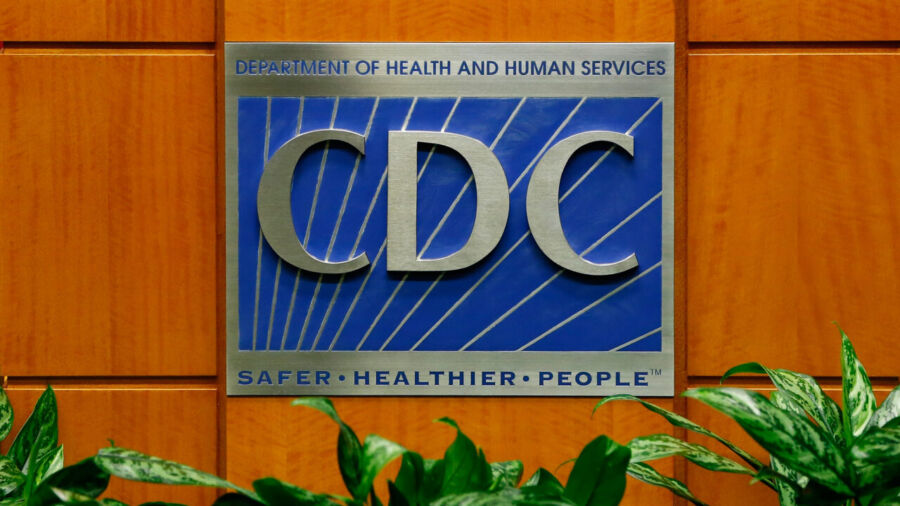The Centers for Disease Control and Prevention (CDC) issued a recent national health alert warning doctors and health care workers to be aware of infections from a flesh-eating bacteria, Vibrio vulnificus, that has been found in multiple states this year.
The agency noted that an estimated 80,000 Vibrio bacteria illnesses each year are reported in the United States, including Vibrio parahaemolyticus and Vibrio alginolyticus. However, the deadliest one appears to be Vibrio vulnificus, which officials say can sometimes cause death within one or two days, although the CDC noted that only about 150 to 200 such infections are reported to the federal agency every year.
“People who are at increased risk for V. vulnificus infection should exercise caution when engaging in coastal water activities,” the CDC said on Sept. 1. “Prompt treatment is crucial to reduce mortality from severe V. vulnificus infection.”
While infections from the bacteria tend to be reported in the Gulf Coast, the CDC noted that infections have risen about eightfold between 1988 and 2018 in the eastern United States.
Vibrio bacteria generally live in salt water or brackish coastal waters, which is when sea water meets with fresh water. People can become infected after exposure to the organism, such as through an open wound, a cut, or a bite that has been in contact with infected water, undercooked or raw shellfish, or directly eating shellfish.
“V. vulnificus wound infections have a short incubation period [the time between infection and when symptoms first show] and are characterized by necrotizing [tissue killing] skin and soft tissue infection,” the CDC also said. In some cases, people may also develop bleeding blisters. If left untreated, infection can spread throughout the body and cause blood poisoning.
The CDC recommends that people stay away from brackish or salt water if they have an open wound and should leave the water immediately if they receive a cut while swimming. It noted that wounds should be treated with a waterproof bandage and washed with soap and clean water.
‘Initiate Treatment Promptly’
It also said that individuals who believe they have an infection after swimming should get treatment quickly, as they will have a better chance of survival. The bacteria also has developed some resistance to antibiotics, while 50 percent of infections don’t respond to treatment, other officials have said.
“Initiate treatment promptly. Early antibiotic therapy and early surgical intervention improve survival,” the CDC said. “Do not wait for consultation with an infectious disease specialist or laboratory confirmation of V. vulnificus infection to initiate treatment.”
For doctors and health care workers, the CDC advised them to “consider V. vulnificus as a possible cause of infection in wounds that were exposed to coastal waters, especially in patients at higher risk for Vibrio infection, including those with underlying health conditions such as liver disease (including alcohol-associated liver cirrhosis), diabetes, and immunocompromising conditions.”
“Ask the patient or family about relevant exposures, including whether they entered coastal water with an open wound; acquired a scratch or a cut while in coastal water; or had open-wound contact with raw or undercooked seafood,” it advised.
The federal health agency also warned against eating raw oysters and other shellfish, saying that they should be thoroughly cooked before consumption. People should also wash their hands with soap and water after handling them.

This summer, health officials in New York, Connecticut, and North Carolina reported multiple fatal or severe V. vulnificus infections, while most infections this year have occurred in Florida. At least five have died in those three states, officials have said.
“V. vulnificus wound infections have a short incubation period and are characterized by necrotizing skin and soft tissue infection,” it also said. Many people who contract the bacteria “require intensive care or limb amputations,” with some infections leading to necrotizing fasciitis, where the flesh around an infection dies and has given rise to the bacteria’s “flesh-eating” moniker.
‘Shouldn’t Be Taken Lightly’
The CDC notice also advised local officials to tell tourists and residents about the risk of V. vulnificus, including putting up signs on coastal areas and beaches. Hurricanes tend to bring considerable ocean storm surge onto land, which then mixes with rainwater or other freshwater.
There have been concerns that Hurricane Idalia, which hit northwestern Florida last month, will bring a rise in Vibrio infections because it can be present in floodwaters. State officials in Florida have issued warnings about the pathogen.
The potentially deadly bacteria “shouldn’t be taken lightly,” Florida Health Department press secretary Jae Williams told media outlets over the weekend. “It needs to be treated with proper respect—the same way we respect alligators and rattlesnakes.”
After Hurricane Ian slammed Florida’s Gulf Coast last year, officials reported that 38 people were infected with V. vulnificus. At least 11 people died, and one person had their leg amputated, officials said.
From The Epoch Times

